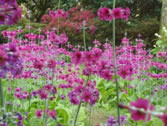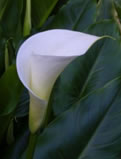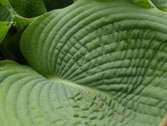Don’t Get Bogged Down With Your Pond

I’ve noticed a trend away from wildlife ponds towards water features in recent years. This may be due to the smaller gardens that many of us have or perhaps the widely-held assumptions that ponds mean increased maintenance or represent a safety hazard. It could also be the case that ponds, in general, have had a lower profile recently.
Either way, a wildlife pond shouldn’t be dismissed too quickly as many of the creatures associated with ponds and pond margins play an important part in helping to keep pest and bug numbers down in the rest of the garden. And with our recent wet and mild winters, we can probably do with all the help we can get in our gardens these days!
A wildlife pond with a functioning and balanced eco-system will be a healthy place not just for fish but for a diverse range of creatures great and small - and it won’t require as much of your time to look after as you may think. Some essential care in the autumn and again in the spring, and that’s largely all that a pond will ask of you. And what it gives back in terms of a beautiful focal point and the sheer delight of being near water is much more than the effort put in.
A boggy area is a perfect complement to a pond. If you are thinking of giving a new lease of life to your pond, or wish to make it ‘fit in’ better with your garden, why not think about creating a marshy area next to it? Provided you don’t mix the boundaries up and allow water from the bog garden to break into the pond, adding a bog garden is a low-maintenance addition that will allow you to use many more different types of plants than could be added to the shelf margins of your pond alone.
Bog gardens don’t need to be attached to ponds; they can work just as well as stand-alone features in an otherwise dry garden. The most natural location for a boggy area would be at the lowest point of your garden (where water would naturally flow to) or in a bowl or dip, although you could choose anywhere that you prefer.
You will need to find a way to prevent water from draining away too quickly through the soil (a pond liner or plastic sheet would work well, pricked with holes a few centimetres above the bottom, or a heavy mix of clay-based, humus-rich soil) and a way of preventing it from drying out completely in hot weather (make the soil deep enough to conserve moisture, use thick mulch or allow it to receive any run off from nearby areas). When planted up, the thick canopy that you can quickly acquire with bog plants will also help to cool and shade the soil beneath, reducing evaporation from the soil.
So, what plants are right at home in boggy areas? Depending on how much room you have, I’d have no
hesitation in recommending Gunnera manicata. It needs a lot of space and in cool areas you’ll need to protect the crown with straw or leaves over winter.
Primula candelabra series and Primula viallii are beautiful spring and summer-flowering members of the primrose family and like a damp, shady spot, as does Fritillaria meleagris (Snake’s Head Fritillary). Planted in drifts, these plants are showstoppers when they come into flower in mid spring.
Ligularia ‘The Rocket’ is great for the back of a boggy border and is an exotic, vibrant presence in any bog garden. Its black stems shoot up from between sharply indented bright green leaves sending up bright yellow flowers through the summer. Pair with Zantedeschia aethiopica ‘Crowborough’ (Arum Lily) to contrast the black stems with a statuesque, elegant focal point of white unfurling spathes emerging from lush, dark green leaves in late spring (and sometimes again in September). 
 If you love large leaves and like your rich greens splashed with creamy white variegations then plunge into Hostas. H. ‘Striptease’, H. ‘Frosted Jade’ and H. ‘Gold Standard’ are just a few that will delight and dazzle throughout the season. If you love large leaves and like your rich greens splashed with creamy white variegations then plunge into Hostas. H. ‘Striptease’, H. ‘Frosted Jade’ and H. ‘Gold Standard’ are just a few that will delight and dazzle throughout the season.
For a dash of zinginess, Carex elata ‘Aurea’ (Golden Sedge) will provide a bright yellow-lime green splash throughout the year and contrasts well with the bronze, purple and red stems and leaves of Lobelia cardinalis, Tellima grandiflora, Viburnum opulus ‘compactum’ and Rheum palmatum ‘Bowles Crimson’.
|

